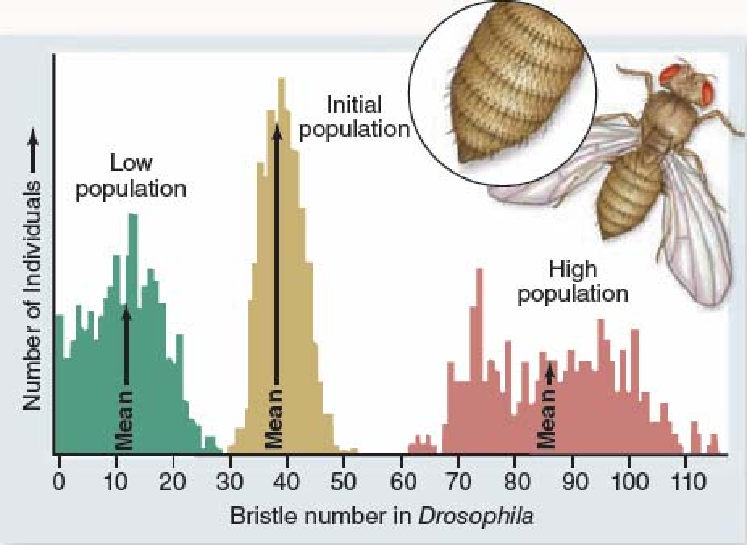Which of the following is a mismatched pair:
1. local infection - restricted to small area
2. viremia - viruses traveling in the blood
3. secondary infection - symptoms reoccur occasionally for years after an initial infection (ex. genital herpes)
4. acute infection: rapid onset of symptoms
5. focal infection: original location of spreading infection
3. secondary infection - symptoms reoccur occasionally for years after an initial infection
You might also like to view...
The figure below shows results of bristle number in Drosophila flies after 35 generations of artificial selection. This figure suggests that

A. bristle number has evolved beyond the original range of phenotypic variation for this trait.
B. after 35 generations of selection, populations no longer exhibit variation in bristle number.
C. natural selection cannot lead to large phenotypic changes.
D. at the end of the experiment, "high population" flies were unable to interbreed with "low population" flies.
Clarify Question
What is the key concept addressed by the question?
What type of thinking is required?
Gather Content
What do you already know about artificial selection? What other information is related to the question?
Choose Answer
Given what you now know, what information is most likely to produce the correct answer?
Reflect on Process
Did your problem-solving process lead you to the correct answer? If not, where did the process break down or lead you astray? How can you revise your approach to produce a more desirable result?
Acetylcholine ____ skeletal muscle and ____ cardiac muscle
a. stimulates; also stimulates b. stimulates; inhibits c. inhibits; stimulates d. inhibits; also inhibits e. binds receptors on; does not bind receptors on
Eight of the 20 amino acids found in proteins are essential, and must be supplied by the diet. The globin protein of hemoglobin is roughly 10% valine, one the essential amino acids. If a person has no source of valine and an adequate supply of the other 19 amino acids, then the globin synthesis rate will be _____% of its expected level
a. 95 b. 90 c. 80 d. 10 e. 0
Which of the following statements about the human genome is false?
A: Protein coding regions make up less than 2% of the human genome sequence. B: Human genes generally have many large introns. C: Over 50% of the genome is comprised of transposons and other repetitive sequences. D: The human genome is unique in structure and composition when compared to any other organism.